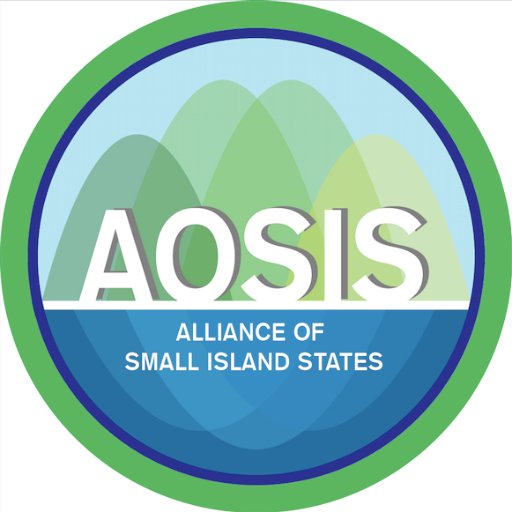High Level Dialogue on "Building Sustainable Peace for all: Synergies between the 2030 Agenda for Sustainable Development and Sustaining Peace"
Statement by the Republic of Maldives
United Nations, New York, 25 January 2017
Mr President,
Let me begin by thanking you and the Secretary-General for your thoughtful opening remarks. I also thank you for organizing today's high-level dialogue on "Synergies between the 2030 Agenda for Sustainable Development and the Sustaining Peace Agenda".
Building off of the contributions of our previous speakers, I would like to turn our collective attention to the challenges faced, in particular, by Small Island Developing States, such as the Maldives, in achieving these lofty goals.
By virtue of their size, the economies of SIDS are frequently characterized by high levels of concentration. The presence of such impediments to economic diversification mean that seemingly small shifts in the global economy—a slight drop in demand for a commodity, or a mild downturn in a trading partner—can have outsized effects on the economic fortunes of SIDS, threatening any progress made towards sustainable development.
Likewise, security risks that in larger nations would be of a merely regional, or even local, concern can, for SIDS, present a systemic threat. The sovereignty and territorial integrity of SIDS have, for decades been challenged by state and non-state actors alike. For SIDS, it does not take much force to shatter what will always be a vulnerable stability. SIDS, perhaps more than anyone else, rely upon the international system, undergirded by the United Nations, to guarantee their security, and to uphold the principles of sovereignty and non-interference enshrined in the Charter
Looming over the immediate challenges to development and peace, however, is a danger that once threatens to both overshadow and intensify existing threats—the danger of climate change.
Mr President,
Climate change has the potential to devastate the economy of virtually every country on our planet, and no countries are at greater risk than SIDS. Considerable attention has been paid to the most dramatic manifestations of such risks: natural disasters, atmospheric changes, rising sea levels. This, undoubtedly, is not without justification. The small size, geographic isolation, and narrow resource base of SIDS mean that they are exceptionally vulnerable to external shocks, and find it particularly difficult to recover in their aftermath.
But climate change also poses a subtler, but graver threat to the development of SIDS: the progressive degradation of already limited natural resources. To the world at large, such gradual trends may appear, in comparison to their more dramatic counterparts, to be too slow, too limited in their impact to be cause for much concern; for SIDS, however, the effects are bound to be no less disastrous.
For a nation with just one primary export, or a limited range of economic activity, the diminution of its resource base would, more likely than not, undermine completely the foundations of its economy, wiping out all and any progress made in sustainable development. For some, it may be tourism. For others, it may be fishing, farming, forestry, or any number of things. Whatever it may be, however, climate change can and will slowly but surely erode the productive capacities of SIDS, and in doing so, make sustainable development an impossible goal.
Trends such as these—of diminishing natural resources, increasingly common extreme weather events, and the unravelling of economies—are individually antithetical to sustaining peace. When mutually compounded, they all but guarantee more frequent and more intractable conflicts for control of a shrinking resource pie
For SIDS, the impact again threatens to be only more acute. The prospective decline of the most important sectors of their economy—and for their citizens' employment—would engender a fertile breeding ground for discontent and potentially radicalization. The corresponding fall in the standard of living and growing scarcity of basic necessities would provide a potent driver for conflict. The loss of land on which to live, or from which to derive a livelihood, as a result of rising sea levels, would spur an unprecedented level of population displacement and with it, even greater cause for conflict.
Mr President,
We speak of conflict as being driven by socio-economic inequality, mismanagement of natural resources, and underemployment. All this is true. But today, we are faced with the possibility that the impact of such drivers may be dramatically intensified as a result of climate change. It is therefore essential that we place responding to climate change at the centre of our efforts towards achieving both sustainable development and sustaining peace.
The four major agreements adopted in 2015 by the international community —the Addis Ababa Action Agenda, the Sendai Framework for Disaster Risk Reduction, the Paris Agreement on climate change, and especially the 2030 Agenda for Sustainable Development, collectively represent a major step forwards in giving the mitigation of climate change the central role required by it in planning for development.
Being mindful of the exceptional danger climate change poses to the peace and security of SIDS, and of the general underrepresentation of such countries in United Nations bodies, particularly those dealing with security matters, it would be worthwhile to consider the proposals made by many to provide for a dedicated seat on the Security Council for SIDS. This would help ensure that the Council affords this issue the attention it deserves while there is still time to act.
Mr President,
Small Island Developing States stand at the front line of the fight against climate change, a fight in which we have the most at stake.
The international community has demonstrated a remarkable willingness to rise to the challenge of understanding the impact of climate change on development, and today, as a result, we have developed a comprehensive framework for international sustainable development. Today, we have met to explore the relationship between the Agenda for Sustainable Development and the sustaining peace agenda.
For this reason, we propose that we now take the next logical step, building on linkages we have already observed. In order to fully understand the relationship between sustaining peace and sustainable development, we must include climate change as part of a triangular, interrelated system.
It is up to the international community whether this interrelationship is a virtuous cycle driven by climate action, or a vicious cycle driven by inaction. For some, the outcome may not seem all that different. For SIDS, it will mean everything. It is for this reason we call for a greater understanding of this relationship, and urge United Nations bodies to act accordingly.
Thank you.



